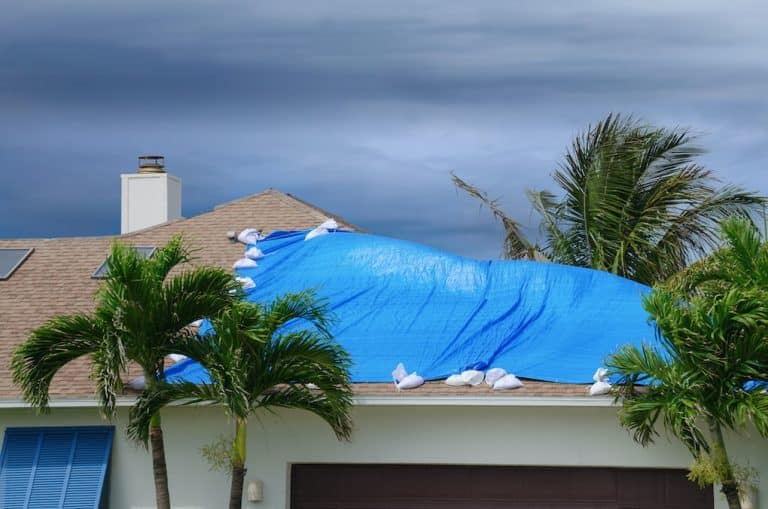If you own a home, you know storms can turn your property into a punching bag.
Hail pelts shingles like marbles, wind gusts pry at siding, and that quiet weekend in your backyard can quickly turn into a scramble to keep everything intact.
The worst thing is, most damage starts small but can quickly become catastrophic, leading to costly repairs—that is, unless you take a few smart, proactive steps to make your home more storm-resistant.
Lucky for you, this article provides exactly that: Seven simple steps anyone can follow, from shoring up vulnerable areas to creating windbreaks, securing outdoor items, and planning emergency measures.
Each tip is designed to keep hail and wind from turning your home into a repair project, so you’ll certainly find them valuable.
Plus, if you want extra guidance on which spots to focus on for hail, you can always check out this hail safety guide before you start.
Inspect and Reinforce Vulnerable Areas
Before the storm even rolls in, walk around your home like a detective. Look at the spots hail and wind love to attack first: roof shingles, skylights, gutters, vents, and exposed siding.
Are shingles loose? Are the vents dent-prone or unsecured? Garage doors rattly? Even small weaknesses can turn into big problems when the weather hits.
Then, take a few simple steps:
- tighten screws,
- replace missing shingles, and
- secure vents.
And if a section of siding tends to flap, add extra fasteners.
Spending a few minutes now can keep your home standing strong when the storm arrives.
Know Your Materials and Their Limits
Not all roofs, siding, or windows handle hail and wind the same.
Some asphalt shingles chip easily, older metal vents dent like butter, and certain skylights can shatter under a big gust. The better you know what your house is made of, the smarter you can protect it.
Check manufacturer guides, maintenance manuals, or even a trusted online resource for hail safety.
Knowing the weak points before the storm lets you prioritize reinforcements—like adding a protective cover to a vulnerable skylight or swapping brittle vent caps for tougher ones.
Build Smart Windbreaks
Wind twists, funnels, and speeds up around obstacles. It doesn’t just push.
So, while a solid wall might seem like a good idea, it can actually make things worse when gusts slam around the edges and hit your home harder.
The trick is to slow the wind, not block it completely. A semi-solid fence, a trellis with climbing vines, or a row of staggered slats lets air pass through just enough to take the punch out of it.
Also, add shrubs or small trees in front, and you’ve created layers that tame gusts before they reach your house.
Even simple tweaks make a huge difference: stagger the boards, leave small gaps, or use natural landscaping as part of the barrier.
Use Plants as Natural Armor
While we’re at using natural landscaping as part of your barrier, your yard can do a lot of the heavy lifting if you set it up right.
For instance, tall shrubs, dense hedges, or a row of palm trees can act like a shield, breaking up wind gusts and softening the impact of smaller hail before it hits windows, siding, or your roof.
The secret? Layering. A low hedge near the house, taller trees further out, and no wide open “runways” for wind to rush through. Each layer slows the storm a little more, giving your home a buffer.
Bonus: In summer, those same plants shade your house and cut cooling costs.
Protect Windows and Glass Surfaces
Windows and glass doors are like bullseyes for hail and high winds. A single shattered pane can turn a small storm into a disaster zone.
Your best bet might just be to install storm shutters or impact-resistant window film, or even heavy-duty plywood for short-term protection if a storm’s imminent.
Also, don’t forget to check the seals around your windows, as wind loves to creep in through gaps—and make sure sliding doors are locked tight.
Even small precautions can stop the tiny cracks that grow into full replacements.
Secure Outdoor Items and Structures
Patio furniture, potted plants, garden tools, even trampolines—they all become projectiles in a windstorm.
That’s why you want to anchor everything heavy, store what you can indoors, and tie down anything that can’t be moved.
And remember: Pergolas, sheds, and fences need a quick inspection too. We’re talking loose panels, unfastened posts, or weak joints—all things that can quickly turn into hazards.
Think of this like storm-proofing the outside layer of your home.
Plan for Quick Emergency Measures
Even with every precaution, storms are unpredictable, but having a plan means you can act fast and avoid bigger damage.
That’s why we always advise that you keep tarps, ropes, sandbags, and basic tools handy.
And also, label emergency supplies clearly and keep them accessible. Don’t let “I’ll find it later” be the excuse when the first hail hits.













